Author: Phil Rusher
On the style of Weissbier, there are more than just a few descriptors used for this much beloved German wheat beer. Its most prominent and characteristic characteristics are typically perceived as banana and clove, which are more often than not viewed as undesirable in most other styles of beer. The ester associated the banana character is isoamyl acetate, while clove is said to come from a compound whose IUPAC name is 2-Methoxy-4-vinylphenol, though it’s more commonly known as 4-vinyl-guaiacol (4VG).
4VG is produced by the decarboxylation of ferulic acid, a compound found in varying concentrations in malted brewing grains including barley and wheat. Armed with the understanding that certain enzymes are more active at specific temperatures, brewers of styles known for their spicy clove character have relied on what’s colloquially known as a ferulic acid rest, which involves holding the mash between 104-122°F/40-50°C for about 15 minutes before warming it to the saccharification temperature. The increased level of ferulic acid then gets converted to 4VG during fermenation, thus resulting in a noticeably more phenolic finished product.
My wife is a fan of Weissbier, so I make it relatively often. While I’ve known what a ferulic acid rest is for awhile, I hadn’t performed one largely due to my belief that phenols and esters in such styles could be modulated by fermentation temperature. With a refreshing Weissbier on the docket, I figured it was a good opportunity to test it out for myself!
| PURPOSE |
To evaluate the difference between a Weissbeer made using a ferulic acid rest and one made using a single infusion mash.
| METHODS |
For this xBmt, I went with a rather traditional Weissbier grist including more than 60% malted wheat with the remainder being mostly Pilsner malt and a dash of my newest secret ingredient from Mecca Grade Estate Malt.
Bananaphone
Recipe Details
| Batch Size | Boil Time | IBU | SRM | Est. OG | Est. FG | ABV |
|---|---|---|---|---|---|---|
| 5.5 gal | 60 min | 12.2 IBUs | 4.7 SRM | 1.048 | 1.011 | 4.8 % |
| Actuals | 1.048 | 1.009 | 5.2 % | |||
Fermentables
| Name | Amount | % |
|---|---|---|
| Mecca Grade Shaniko White Wheat Malt | 5 lbs | 46.51 |
| Mecca Grade Pelton: Pilsner-style Barley Malt | 4 lbs | 37.21 |
| Mecca Grade Wickiup: Red Wheat Malt | 1.5 lbs | 13.95 |
| Mecca Grade Opal 22: Graham and Cocoa Malt | 4 oz | 2.33 |
Hops
| Name | Amount | Time | Use | Form | Alpha % |
|---|---|---|---|---|---|
| Mandarina Bavaria | 15 g | 60 min | Boil | Pellet | 7.4 |
Yeast
| Name | Lab | Attenuation | Temperature |
|---|---|---|---|
| Stefon (G01) | Imperial Yeast | 75% | 63°F - 73°F |
Notes
| Water Profile: Ca 50 | Mg 0 | Na 28 | SO4 75 | Cl 60 |
Download
| Download this recipe's BeerXML file |
I started things off by collecting the proper volume of RO water a couple days ahead of time.
On brew day, I adjusted the water to my desired profile while it was heating up then weighed out and milled identical sets of grain for each batch.
Once the water for the ferulic acid batch reached 110°F/43°C, I incorporated the grains then set the Grainfather controller to hold that temperature while recirculating for 15 minutes.
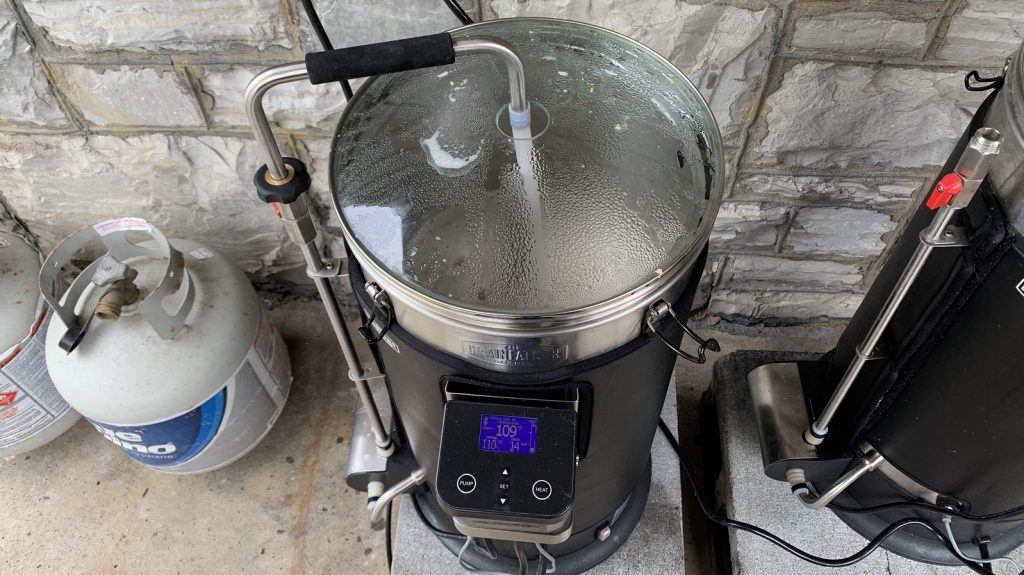
With the ferulic acid rest complete, I set the controller to continue heating the mash to my desired saccharification rest temperature of 148°F/64°C.
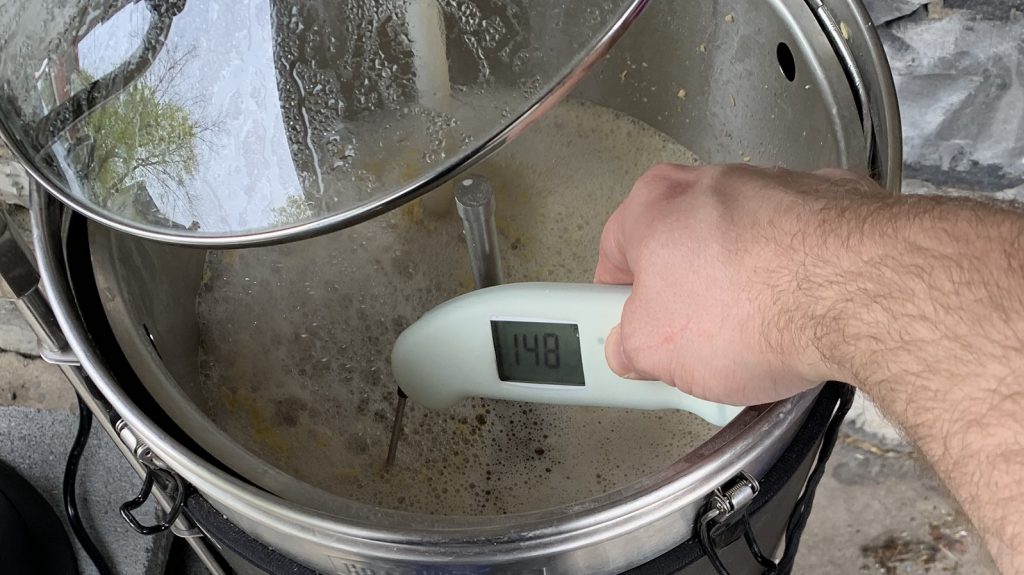
Following each 60 minute mash rest, the grains were removed and sparged.
While waiting on the wort to heat up, I weighed out the kettle hop additions.
Both worts were boiled for 60 minutes with hops added at the times stated in the recipe.
At the completion of each 60 minute boil, the worts were quickly chilled then I took refractometer readings showing both achieved the same OG.
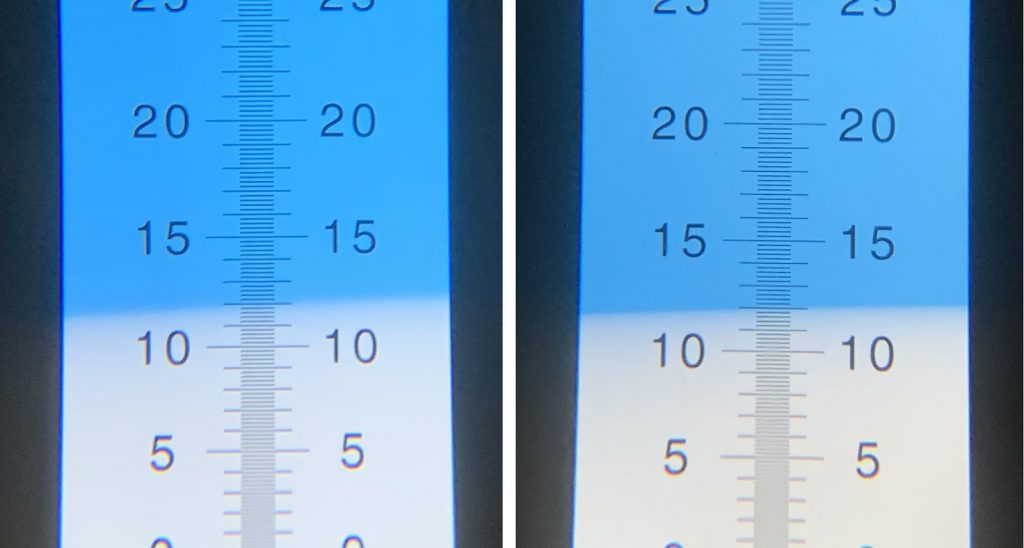
After racking equal volumes of wort from either batch to identical fermentation vessels, I pitched a single pouch of Imperial Yeast G01 Stefon directly into each.
I then placed the beers next to each other in my chamber controlled to 68°F/20°C and connected blowoff tubes… which clearly weren’t enough for the crazy kräusen Stefon produced just a day later.
After cleaning up the mess, I replaced the blowoff tubes and let the beer continue fermenting. Hydrometer measurements taken after a week showed the ferulic acid rest beer finished about 0.001 SG points lower than the single infusion mash beer.
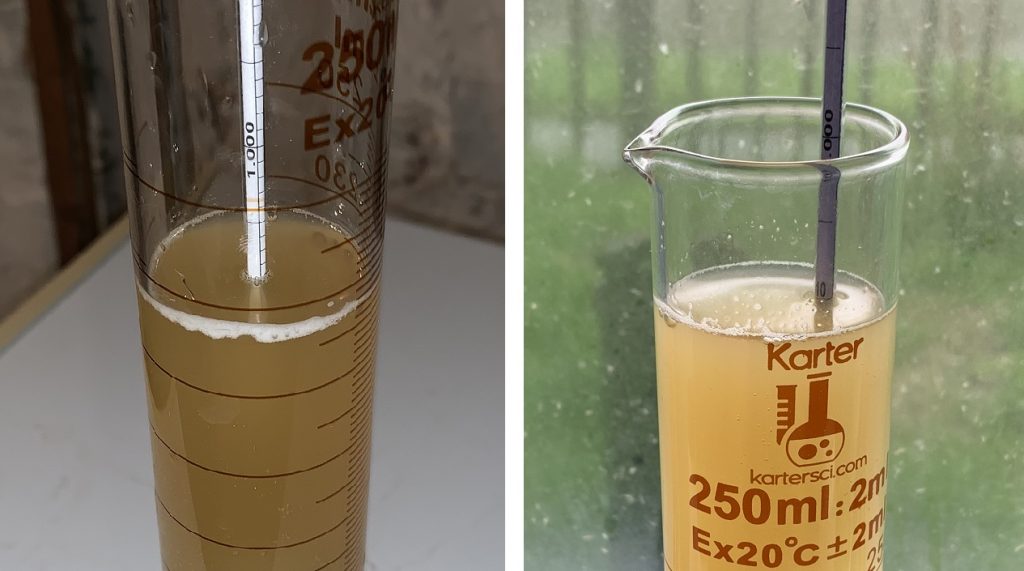
I proceeded with transferring the beers to separate CO2 purged kegs.
The filled kegs were placed in my cool keezer and burst carbonated. After a couple weeks of cold conditioning, both were ready to serve.
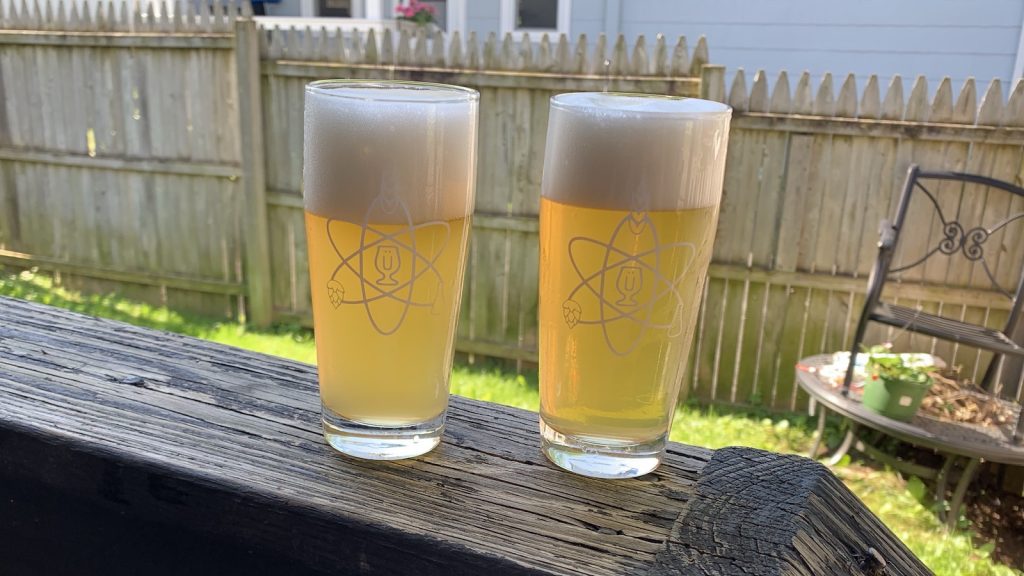
| RESULTS |
A total of 24 people of varying levels of experience participated in this xBmt. Each participant was served 1 sample of the beer made with a ferulic acid rest and 2 samples of the beer made with a single infusion mash in different colored opaque cups then asked to identify the unique sample. While 13 tasters (p<0.05) would have had to identify the unique sample in order to reach statistical significance, only 6 (p=0.86) made the accurate selection, indicating participants in this xBmt could not reliably distinguish a beer made with a ferulic acid rest from one made using a single infusion mash.
My Impressions: Out of the 6 triangle tests I attempted, I chose the unique sample just 3 times, and even those were largely guesses. I perceived both beers as having equally high levels of fermentation character that one would expect in a Weissbier– spicy phenolics and banana esters. Interestingly, to my eyes, the beer made with a ferulic acid rest appeared a shade darker and a bit hazier than the single infusion beer.
| DISCUSSION |
When designing a beer recipe, there are many things to consider, and in doing so the best choice might seem to defer to the communal wisdom for guidance. A frequently repeated bit of advice to brewers looking to increase the perceptible clove character in their German wheat beers is to perform a ferulic acid rest, a method that seems to have solid scientific support. For this reason, tasters’ general inability to tell about beers made with and without a ferulic acid rest is pretty surprising.
Both beers in this xBmt exhibited perceptible levels of spicy phenolics, though neither seemed to have more than the other. Aesthetically, however, the ferulic acid rest beer did seem somewhat darker and hazier than its single infusion counterpart. I’m not exactly certain what to attribute this to, but it seems reasonable to assume the prolonged time the grain was exposed to the water with increasing temperatures from ferulic acid rest to saccharification temperature may have been a factor.
With the Grainfather, I have the ability to program mash steps that automatically adjust, and even so, I have no plans to regularly perform ferulic acid rests in the future. As a new father, my time is limited, so employing such a method only serves to extend my brew day. While the ferulic acid rest beer in this xBmt may have contained more 4VG than the single infusion beer, it wasn’t enough to be noticed by blind tasters or myself. Despite using a popular Weissbier yeast, it’s possible this particular strain is the reason for these results, hence I do look forward to exploring the impact a ferulic acid rest has when fermenting with different yeasts.
If you have any thoughts about this xBmt, please do not hesitate to share in the comments section below!
Support Brülosophy In Style!
All designs are available in various colors and sizes on Amazon!
Follow Brülosophy on:
FACEBOOK | TWITTER | INSTAGRAM
If you enjoy this stuff and feel compelled to support Brulosophy.com, please check out the Support page for details on how you can very easily do so. Thanks!


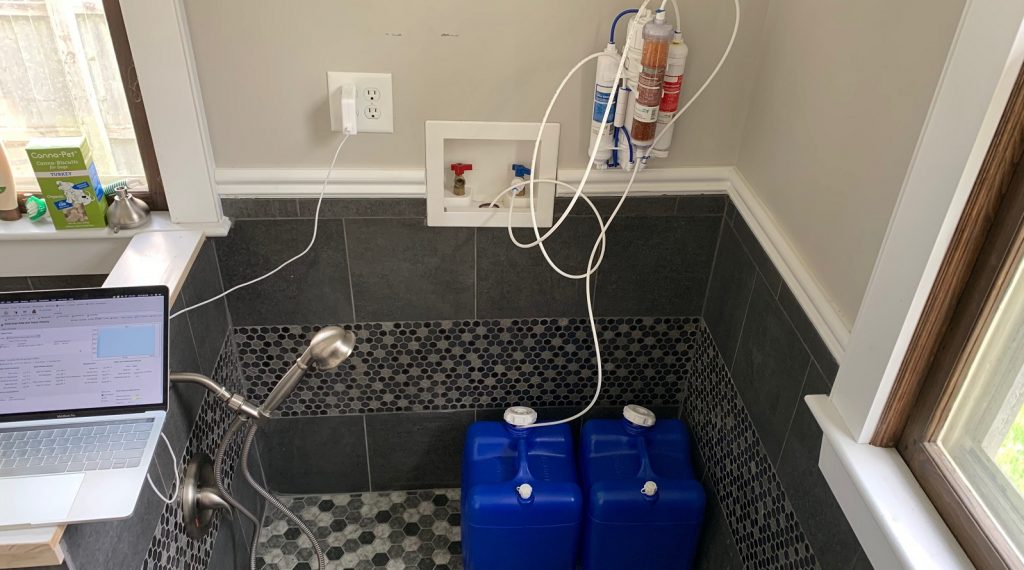
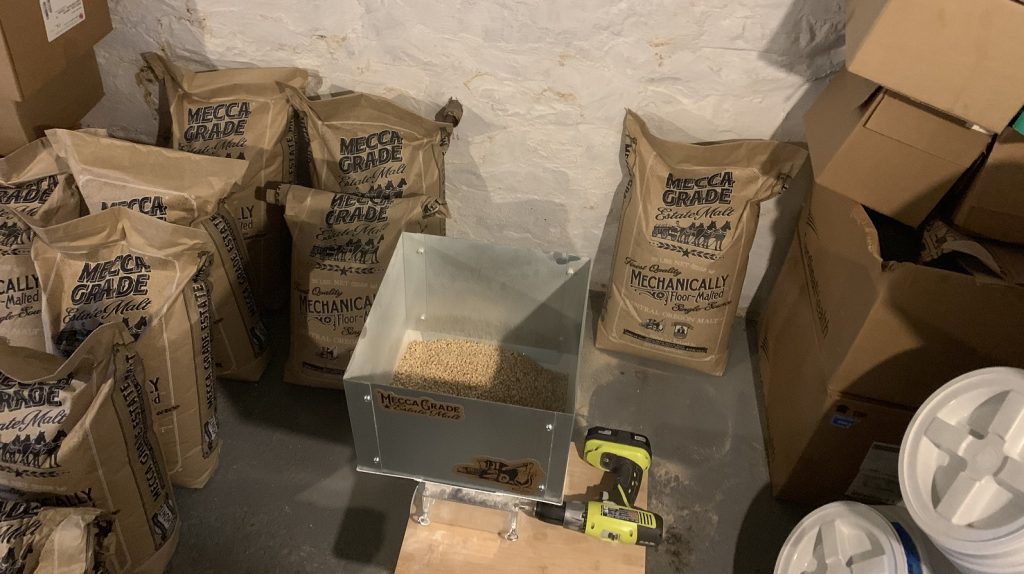
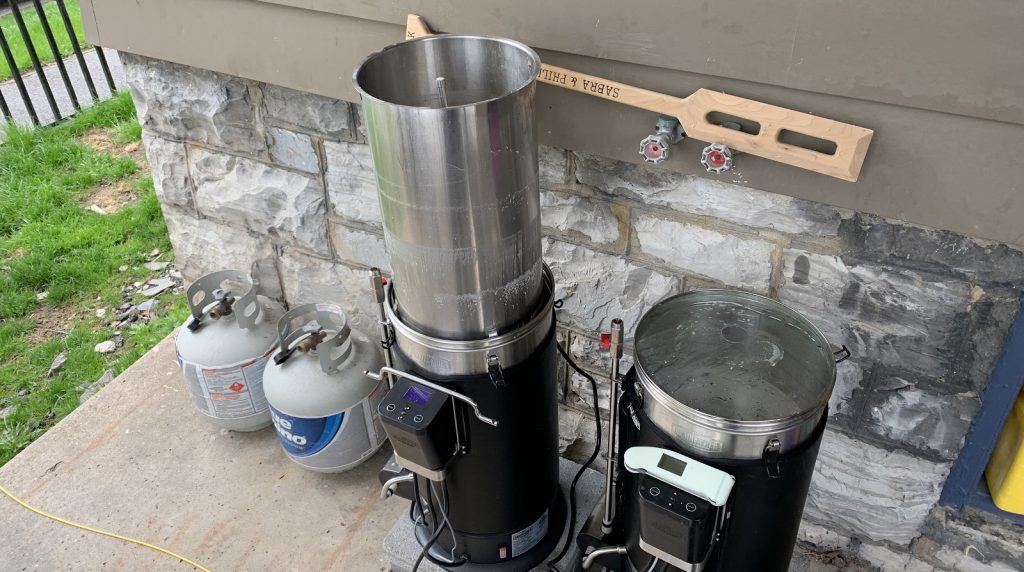
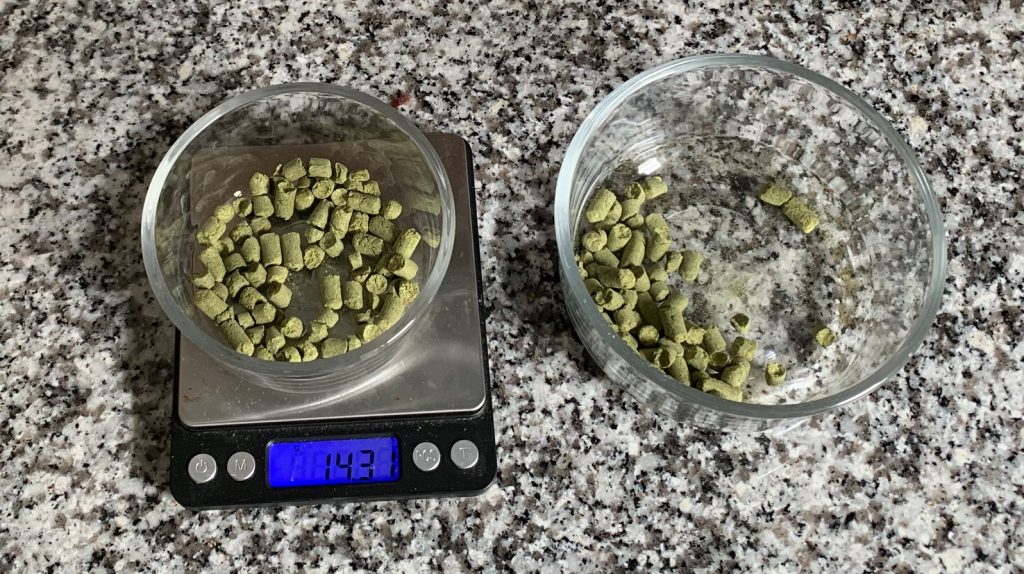
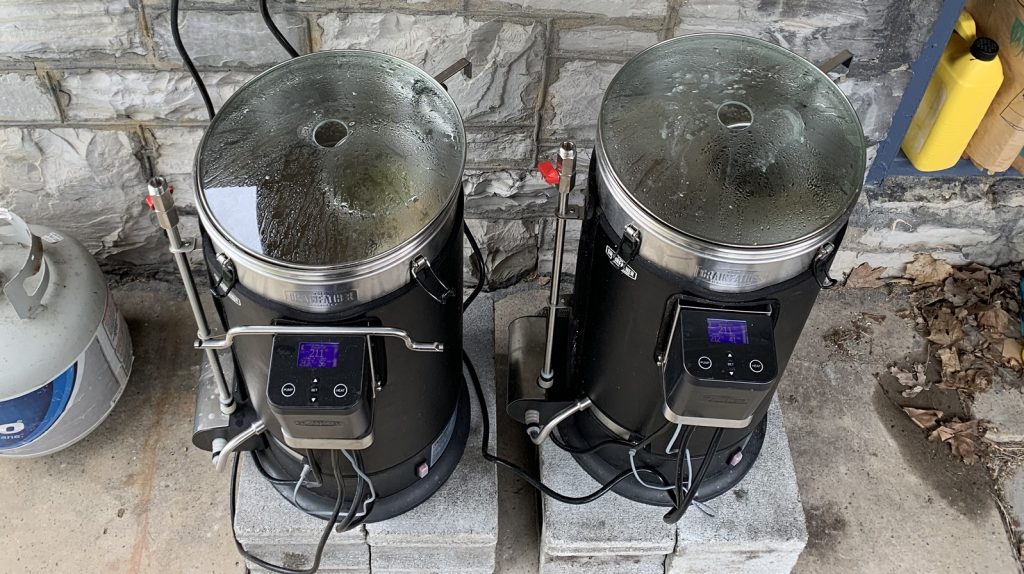
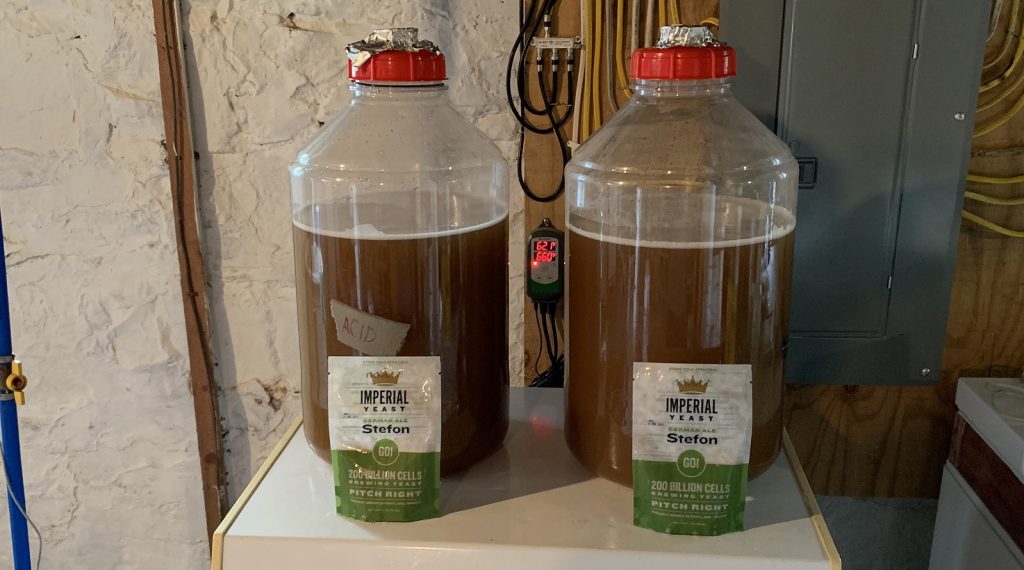
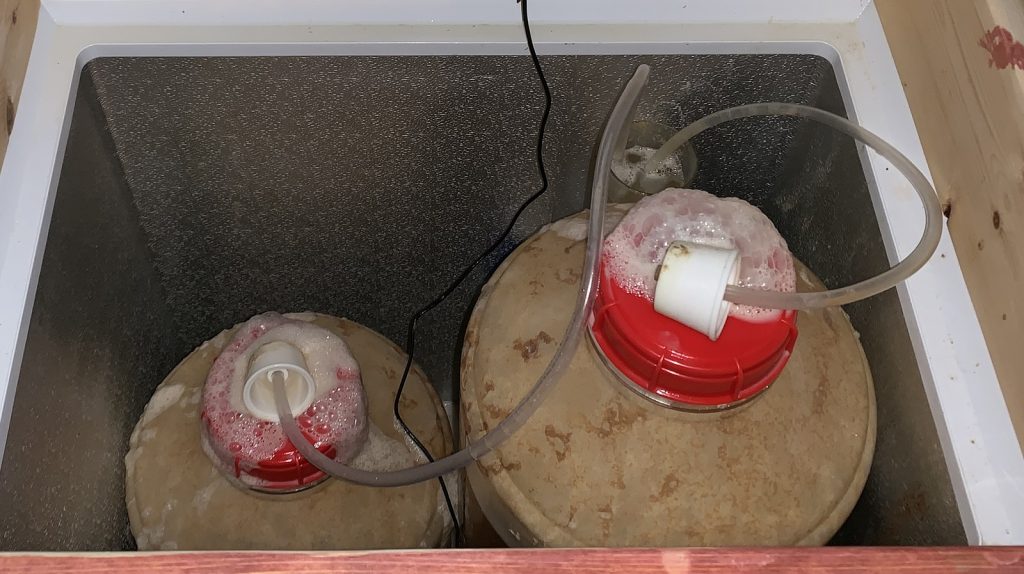
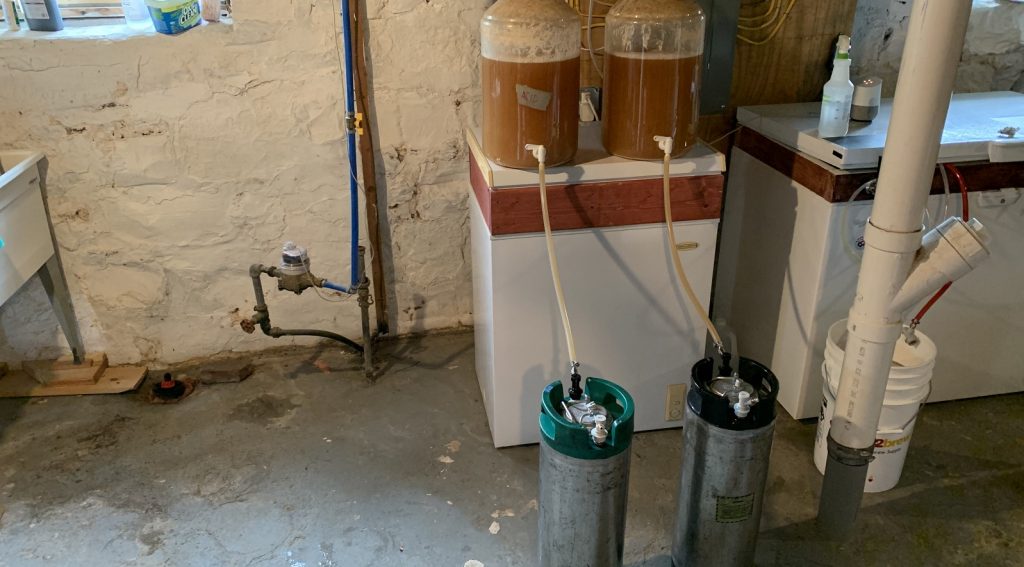










17 thoughts on “exBEERiment | Impact A Ferulic Acid Rest Has On A Weissbier”
Results section reads “While 23 tasters (p<0.05) would have had to identify…". I believe that should read 13 sonce the sample was 24, correct?
13 is correct and that has been fixed. Thanks, my fat fingers like to make typos 🙂
What was the pH during the ferulic acid rest?
I did not measure the pH because my pH meter is out of commission. It would have been interesting to see, though.
Did you add acid to the mash? When?
Lactic acid was added to the strike water for both beers. We wanted to isolate the mash temperature specifically and nothing else so the pH for both beers had to be the same. Revisiting the pH here would be of interest for any further experimentation.
Thanks! The German method is to add acid (sauergut) after the ferulic acid rest. Higher pH (5.8) leads to a higher level of ferulic acid.
I’d be interested to see whether pitch rate influences the perception of banana and clove esters in this style, as traditional folklore tells us. Having trusted the ferrulic acid rest as true, nothing would surprise me to find that the increased ester expression which supposedly comes from under-pitching and stressing the yeast, is actually imperceptible to most people. On that note, a full pouch of Imperial yeast for each fermenter most certainly provided way too many cells to achieve the “stress” effect.
Right, this is what we’ve talked about as well. I think it’s fair to say that in most cases, the cumulative effects of individual variables often have a greater impact on the final result than the component variables. However, one of the things we try focus on for control purposes is to isolate just one variable at a time so we can say that this one thing we’re looking at seems to affect the final beer. Perhaps in the future we can revisit this one with another variable!
Thank you for doing this xbmt. I will have to try the Stefon the next time I brew a hefe (just bottled one today). However, I’ve found that for me the Mandarina Bavaria hops seem to overshadow all the other subtle flavors in this style. I’m with you on the fermentation temps driving the flavor but I feel the ferulic rest determines how much influence those temps will have.
FWIW, to accentuate the clove the most helpful mashing information I’ve come across was/is from Brau!Magazin: “Ferulic acid production optimum is at 45°C (113f) and pH 6,0. Additional conservation of enzymes at mash in temperature of 40°C (104f) .” For me, I will add the grains to the cold strike water (2qt/lb) and heat the mash, very slowly, to 104, pause to take a pH reading, then slowly rise to 113, pausing for another pH reading and resting for 20 minutes.
Thanks again.
Hey man. Yeah, this is what we’ve talked about before too; multiple variables at once are not the standard Brü practice. At least not at first! We may have to revisit this with a different approach to test these out.
I find this to be one of the most shocking results yet. Anecdotally (which I know right, big whoop) I’ve found it to make a really big difference. The only variable different between mine and yours would be I use a fair dose of unmalted wheat. I wonder if that variable could have an impact?
I don’t know if it’s shocking, per se. But I do think that having multiple variables at play, ie mash pH and acid rest, may have yielded different results. Food for future experimentation!
I would love to see this re-done with incorporating the “proper’ pH for a ferulic acid. Everything I’ve seen suggests the rest needs to be done at a higher pH (5.8+) than the typical mash pH. I would venture a guess the actual amount of ferulic acid generated wasn’t much more than the non-acid-rested mash.
This thread seems to have a limited discussion about the yeast which I think is paramount to obtaining a banana/clove/German wheat beer. The ferulic rest is important for the clove aspect and cooling the wort down below 60 F is critical for the banana aspect. But, the most important thing (after doing the two things above) is choosing the right yeast. That is, if you enjoy a wheat beer with ester and phenolic character, I’d suggest the Wyeast 3068, the Weihenstephaner yeast used in Vitus. Wyeast 3333 will emphasize more of the clove aspect but works well too. Wyeast 3056, however, just doesn’t cut it if you want something different than the typical American wheat beer. There are wheat beers in Bavaria that resemble our blander American wheat beers here in the states. To me, they are less interesting and enjoyable.
The ferulic acid rest creates more of the precursors for the clove flavor, but you also need to adjust the fermentation schedule so that the yeast cooperate. Fermenting without a starter at 68+ deg F will produce a great deal of esters and banana character, which will significantly reduce the perception of 4VG and clove character, even if the yeast did produce more 4VG thanks to the ferulic acid rest. To increase the clove flavors it is recommended to also (1) over-pitch (use a starter or a larger starter) and (2) ferment cooler, between 62 and 66 deg F (the lower side will lead to more perceived clove character).
I’m a professional brewer and a Bavarian Hef I formulated became the flagship beer for one of the companies I worked for (Pacifica Brewery, just south of SF).
I began brewing it as a single infusion beer, and “it was great!” said everyone, including myself. I did however, decide to see if my brew system (a 10 bbl Criveller) could handle a ferulic rest. The beer turned out very different, and in a very positive way.. it was better than great. I made a few more batches with the rest, and then one without, just to see if my hunch was correct. Without a doubt there was a major difference.
From my observations, the ferulic rest added a creamy mouthfeel, enhanced the clove-like phenols, and added a vanilla note that I’ve read later is also related to ferulic acid. It really *made* the beer. I tended to also end up with a higher finishing gravity, which I never figured out, since my conversion temp was the same. It may have to do with the length time required to step up to a conversion temp (it would take a solid hour to get from 115F to 150F).
I would pitch on the low side, but not drastically low, and I noticed zero difference between fermenting at 66, 68, or 72… I tended to just go with 72F because I enjoy the esters I was getting from my WLP380 (“Hef IV” by basically everyone’s catalog). Lots of fresh sliced pear, and more of an under-ripe banana character.
I can tell immediately if people use the rest in their Hefs just by tasting them. Without the rest, Hefs tend to come across as thin, watery, and often have a high level of sulphur. Basically, all the reasons people “don’t like Hefs.” With the rest… man, is it a TASTY ass style of beer! I love that it is both nourishing and refreshing at the same time, and it contains characters not found in any other style.